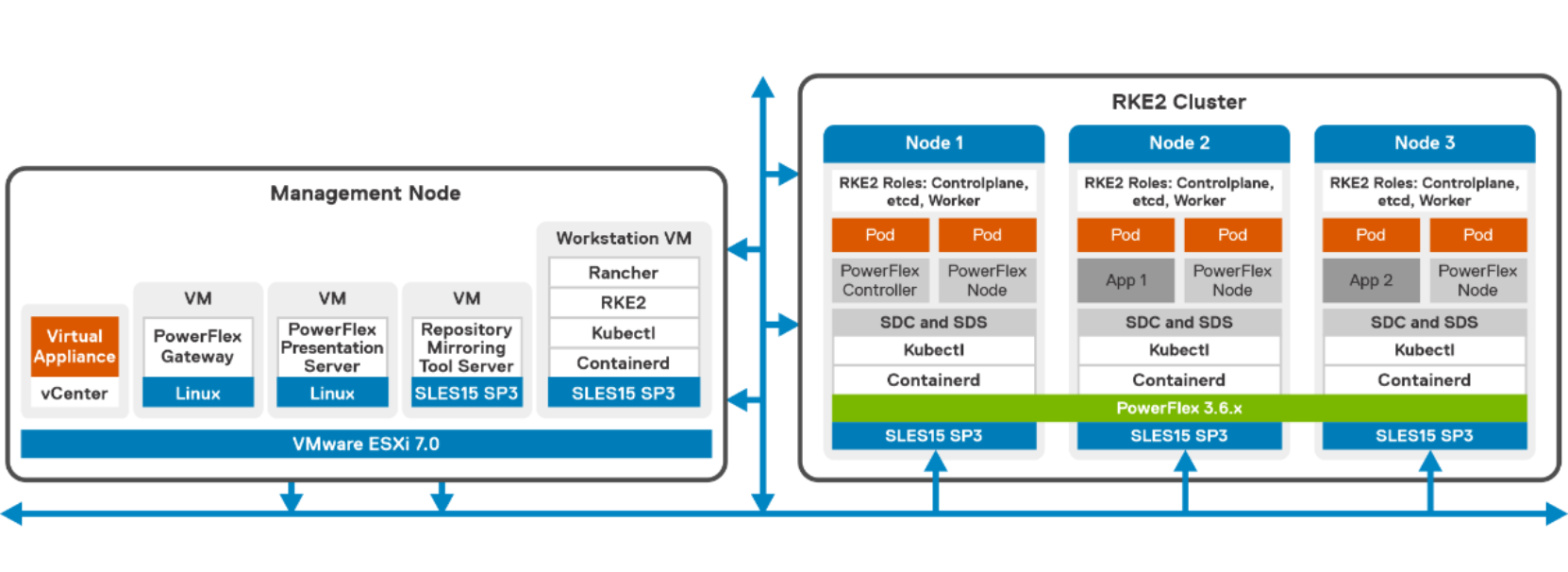Logical architecture of RKE2 cluster on PowerFlex HCI cluster
Home > Storage > PowerFlex > White Papers > SUSE Rancher and RKE2 Kubernetes cluster using CSI Driver on Dell PowerFlex > Logical architecture of RKE2 cluster on PowerFlex HCI cluster
Logical architecture of RKE2 cluster on PowerFlex HCI cluster
-
The following diagram shows logical architecture of the RKE2 cluster that is deployed on a PowerFlex HCI cluster setup with four nodes.
In this example, each node includes two Intel Xeon Scalable 20-core processors, 768 GB RAM, and two 900 GB SSDs. Each node runs the SDC and SDS component of PowerFlex thereby acting as a HCI node. A single protection domain is created from these four systems. A single storage pool is created within this protection domain from which persistent storage volumes can be provisioned for attachment to Kubernetes pods.
In this solution, RKE2 cluster is deployed on the physical nodes that are installed with latest SLES15 Service Pack operating system.

Figure 4. Logical architecture of RKE2 cluster in bare metal environment
Note: In both the solutions, the management node hosts the vCenter appliance, PowerFlex Gateway, PowerFlex Presentation server, Repository Mirroring Tool (RMT) server, Linux workstation for RKE2, PowerProtect Data Manager, and DDVE. The RMT server and Linux workstation are VMs configured with latest SLES15 Service Pack operating system. The RMT server acts as a proxy server to SUSE customer center with repositories. It helps customers with SUSE Linux Enterprise software updates and subscription entitlements. For more information about RMT server and its configuration, see Repository Mirroring Tool Guide.
